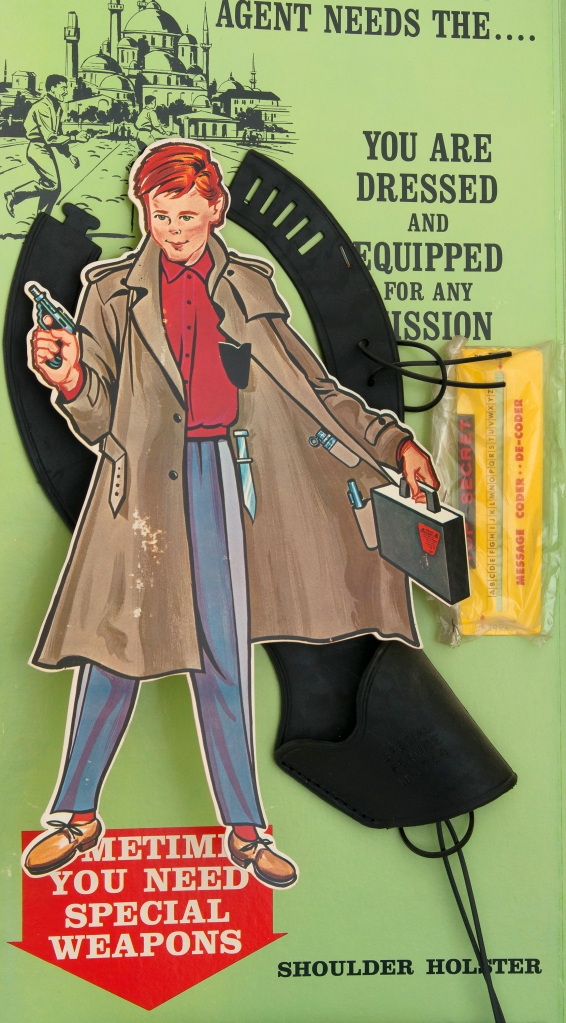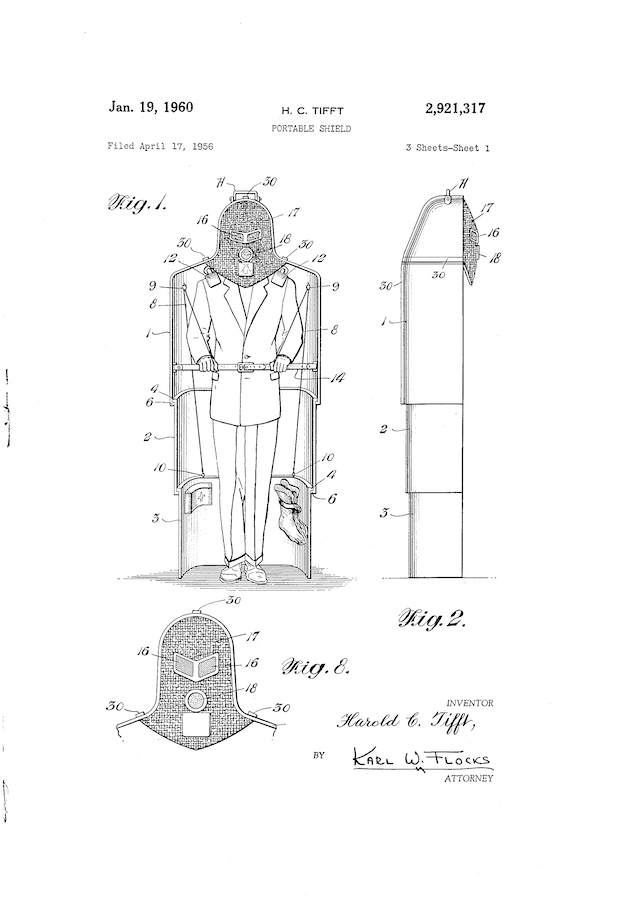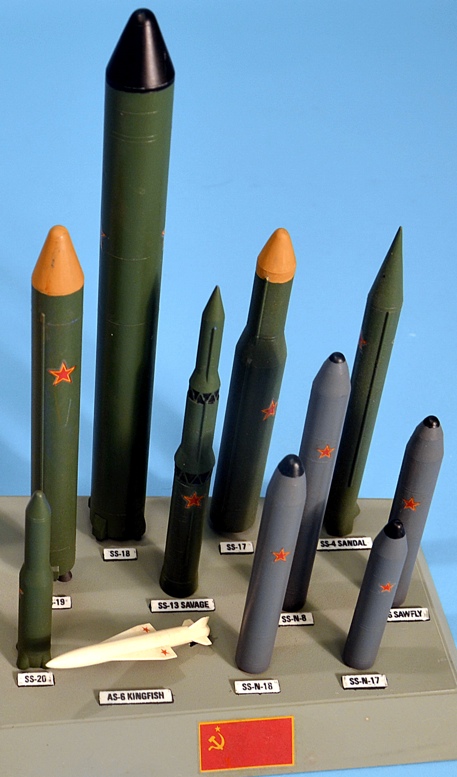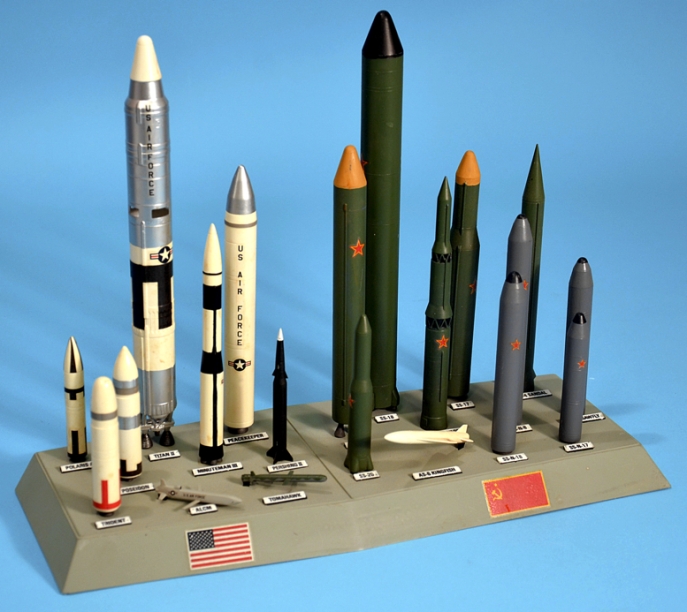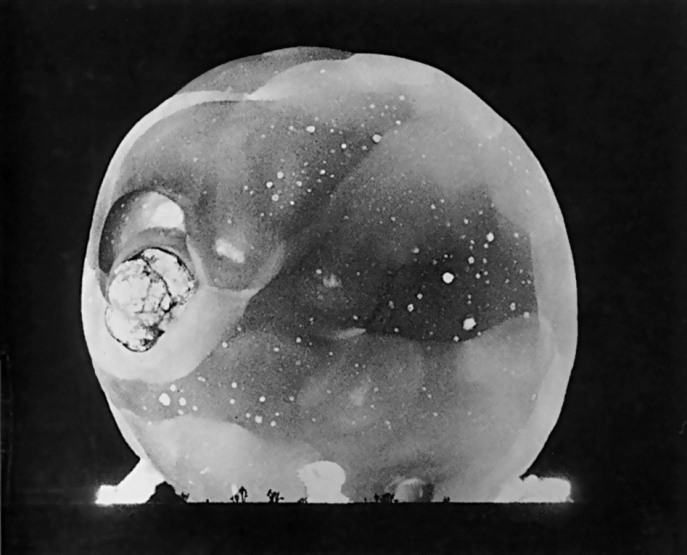
Trinity Test Fireball – 16ms after the first ever detonation of a nuclear weapon. (Photo via Wikimedia Commons)
16 July 1945. Alamogordo, New Mexico. 5:29:45 a.m. – ‘The Gadget’ is detonated and the world is forever changed. The ‘atomic era’ has begun. On 6 and 9 August 1945 the United States government drop two atomic bombs above the Japanese cities of Hiroshima and Nagasaki, respectively. The horror and devastation of these two atrocities soon become known around the world. 29 August 1949 – the Soviet Union conducts their first detonation of a nuclear weapon. The Cold War is on.
In the U.S., the possible reality of nuclear annihilation struck the minds of the people. At home, at work, at school, in entertainment, etc., the society was deluged with public service announcements and emergency preparedness geared towards surviving an atomic attack. Fortunately, that feared assault has not yet occurred – although it is still a possibility despite the fact that it is no longer quite so salient on the minds of the populace.
But what if it did occur? What would the remnants of the time look like to those future generations whose ancestors might have survived the destruction? There is an artist photographer whose work seems to capture that haunting effect. His name is Troy Paiva. He uses the moniker of ‘Lost America’ as the umbrella term for his projects.
Paiva has been drawn to urban exploration since being in his teens and he has used that interest to become the master of night photography. Utilizing natural moonlight, as well as synthetic lighting of varying kinds, he doesn’t just take photographs of his subjects – in a lot of ways, he paints them. Paiva’s works involving the abandoned west are the primary focus of this post.
Below are a few of Paiva’s photos depicting various remains of abandoned mid-twentieth-century cultural artifacts. Some of these were once considered the gems of the time – to collectors they still are. The eerie luminescence that colors these works evoke a kind of radiant glow often mentally associated with things atomic. In many ways they depict a society now long gone, and even though the decay has been brought about by abandonment, one’s imagination could be led to the thought of a more sinister destruction.

Underground Castle: Castle AFB was a Cold War era Strategic Air Command installation in central California. This is a semi-blastproof, partially underground, barracks-bunker where B52 and KC135 crews lived on 2 week shifts. On a scramble they’d run out of these tunnels to their waiting aircraft. The crews could have their aircraft in the air in 15 minutes, 24-7.

Aluminum Drizzle: How hot does it have to get for an airliner to melt? Aviation Warehouse, El Mirage, California.

Rusty Boomerangs: This Jetsons-era Googie gas station rots beside Interstate 80, just east of the Bonneville Salt Flats in Utah.

A Chemical Hotspot: Inside the assayers office at Atolia tungsten mine, abandoned since the ’60s. Judging by the ventilated booths on the left, a dirty chemical process was done in this room.

Kitchen Witchin Hour: About 1 AM in the unlucky kitchen of a destroyed abandoned house. A mile down a lonely dirt road, in the middle of nowhere, in the Mojave.

Greyhound Scenicruiser…at the Williams Bus Yard. The unrestored inside of the bus was as hot as a sauna, and smelled like an overflowing toilet.
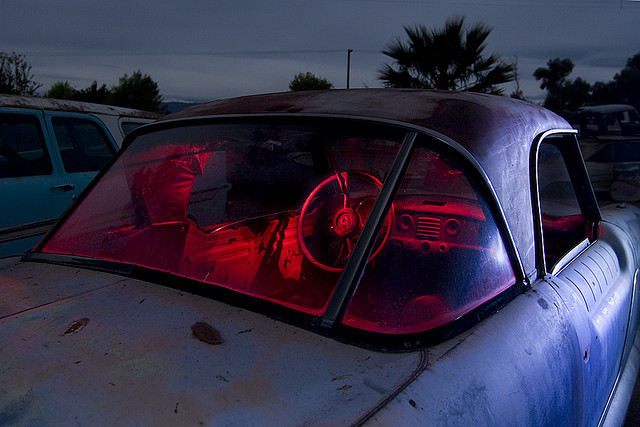
Kelvinator: Late-’50s Nash Metropolitan, at The Big M in Williams, California.

The Fear: Skaggs Island Naval Base. Over 100 buildings, abandoned, near Sonoma, CA.

Hope Has Left: Never to return.
Inside the Palms Motel at Salton Sea Beach. Abandoned and ravaged by vandals. Taken shortly after dusk on a sultry, hot night.
If you’re interested in seeing more of Troy Paiva’s works, you can visit his Lost America Flickr page here, or the Lost America website that features a bio, information on night photography workshops and techniques, links for purchasing books and prints, and access to Paiva’s blog, here.










